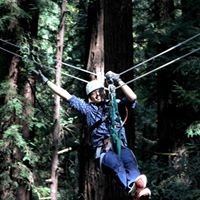Estimate the number of miles of roads in the US?
Clarifying questions:
Are we talking about streets in the city or freeways or both?
Assuming it is both city streets and freeway
Assuming this is for the continental US and not Alaska and Hawaii as well.
Equation:
Total road miles in the US: City Streets + Freeway - (a)
City Streets - Urban City Streets + Rural City Streets - (b)
Thus, Total road miles in the US: Urban City Streets + Rural City Streets + Freeway length. - (c)
The approach I will take is: Estimates of the miles total city in (b) and then estimate freeway length.
Total Area in the US: Length of US x Width of US
Width of US: 3000 miles (it takes 6 hours to fly across coasts)
Length of US: 1500 miles (take ~3 hours to fly from Seattle to San Diego)
Total Square miles in the US: 3000x1500 → 4.5M sq miles
Based on my travels across the US, I have seen 40% of the US as empty and unpopulated. So I am assuming roads are only int the remaining 60% populated parts of the US.
Square miles of area in the US that is populated → 0.6 * 4.5M sq miles ~ 2.7Msq miles of land area
Assuming, 20% of US city streets are in dense urban areas and 80% are not in very dense cities or rural cities
US City Streets cover → 0.2 *2.7M sq miles of US ~ 0.7M square miles
US Rural Streets cover → 0.8 *2.7M sq miles of US ~2M sq miles
Calculating how many miles of roads are there in the city
From my experience in a dense city like SF, I have seen about 10 blocks per mile and every block has a street running through it. So we can essentially imagine a square mile of city with 10 blocks across in length and 10 blocks across in width. So a square mile has 10 roads running in parallel across length and 10 miles across width, thus, it has 20 miles of road. SF is an extremely dense city so it is not a good representation of all the cities in the US and thus I will assume average major cities have 10 miles of road per square miles.
Assuming 1 sq mile of dense city has 10 miles of road
Thus, 0.7M sq miles will have → 7M mikes of road.
From my experience rural cities have almost 1/4th road density as a city. As a result, I will assume 1sq mile of rural city will have 2.5 miles of road.
Thus 2M sq mile of rural area will gave 5M miles of road …
Thus total city + rural road ~12M miles of road
The above number seems too high, given that I have not accounted for freeways yet. Any suggestions on where I went wrong or what a better strategy would be? May be some of my assumptions are wrong? Also, how do I estimate the number of miles of freeways in the US?















